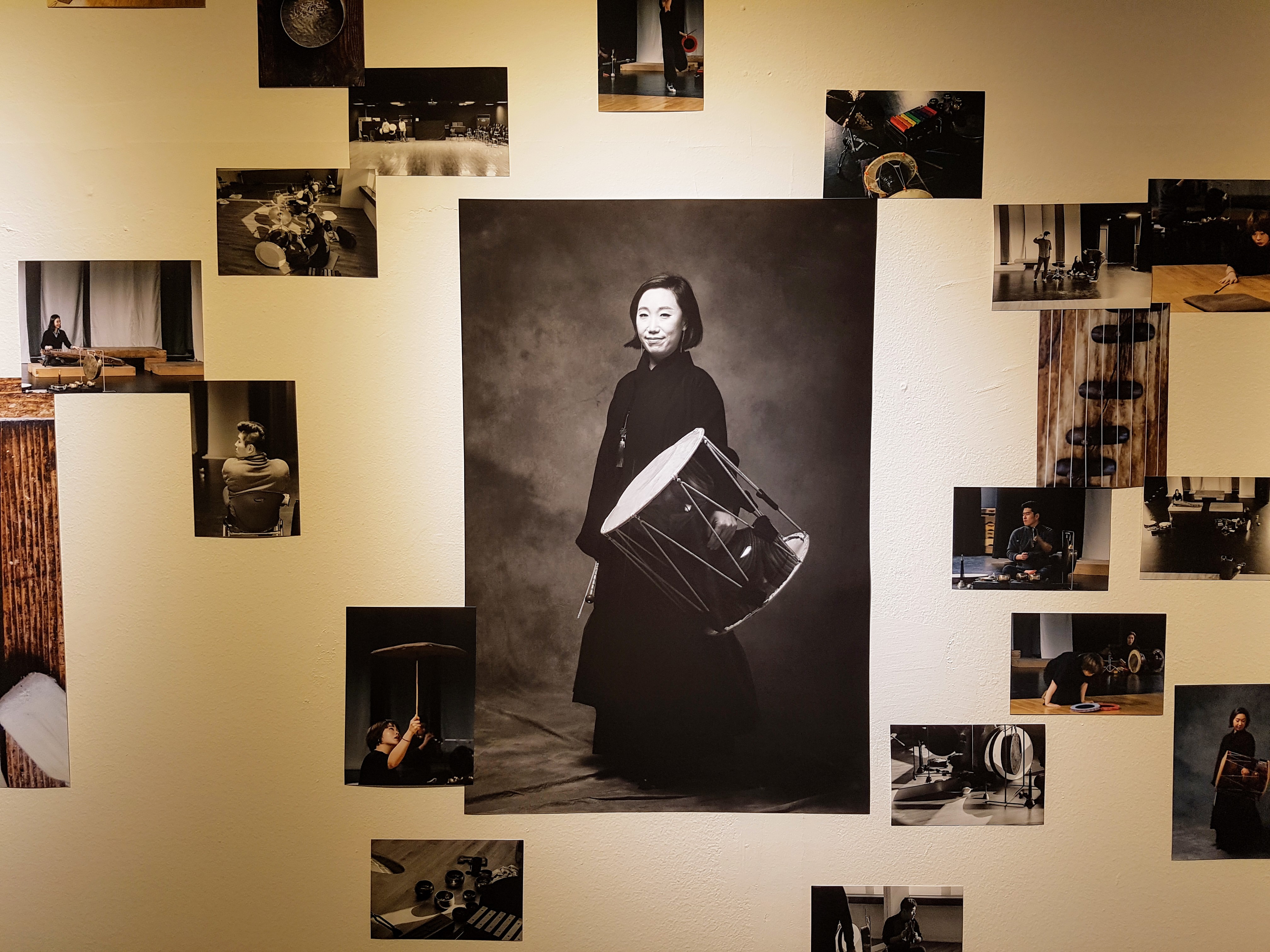You have to be bloody-minded, and you have to be awkward. You have to be, like, “I’m doing it like this.” It doesn’t matter what everyone’s saying it should be like. Every artist you’ve ever loved has done that.
– Richard Russell
New Old Korea
Kim So Ra is why I live in Korea.
I discovered her this past Saturday night, after a new friend made a vague invitation to a janggu concert. It was a bitterly cold night, and the concert was in an underdeveloped, industrial section of Seoul called Yeongdeungpo, where the main street is still lined with small machine shops and artificial limb wholesalers. It reminded me of winter excursions to the Lower East Side twenty years ago to see experimental theater productions tucked in between old bra shops. I connected with some friends of friends at a chicken restaurant with an outdoor fire rotisserie and stacks of wood, and then we headed off, eventually finding our way to the Mullae Art Factory Box Theater, a stylish bit of postmodern concrete architecture hidden down an unpromising side street.
I wasn’t expecting much. The theater was small, the audience probably fewer than fifty people, and the theme of the show, “A Sign of Rain,” complete with accompanying video projections, seemed like it might turn into the kind of embarrassing conceit that masks mediocre playing.
But the art scene in Seoul, I’ve discovered, delights more often than it disappoints. Kim So Ra, it turns out, is not only a janggu virtuoso, but also a subtle explorer of world percussion, which she integrated into her playing in startling ways, incorporating everything from pouring water to Tibetan singing bowls (only the xylophone piece fell flat). Her fellow musicians — percussionist Hyeon Seung-hun, O No-eul on piri, Im Ji-hye on gayageum — created a rich, complex range of sounds that put me in mind of the Steve Reich performance I saw at BAM in 2015.
Visual music
Traditional janggu performance is inseparable from the excitement of watching the drummer swing the stick from one side of the hourglass drum to the other, and samulnori music comes fully alive as dance, with colorful costumes and long spinning streamers attached to elaborate hats. Kim So Ra augmented that visual tradition with video projections. At times it felt a little Pink Floyd laser show or nineties screen saver, but at their best, the videos helped to focus our attention on particular details in the music, or brought out themes and feelings, as when the screen behind the stage became a dancing watercolor ink painting, creating a kind of willed synesthesia.
Similarly compelling was a burst of modern dance from Kim Jeong-un, whose expressive face and joyous movement brought the theater to life even before she began spinning plates (which is apparently an old Korean art form that predates Ed Sullivan by some years).
The cleverest effect was a projection onto a white-painted janggu, timed to the rhythm so that drum hits became splashes of water and bursts of color. What could have been a gimmick turned out to be powerful and moving, in no small part because of the general tendency in Korean art to take craft seriously.
More than fusion
That all of this is happening in Seoul, right now at this moment in history, is a big part of why I’m here. Other than Japan, there’s nowhere else in Asia where artists are bringing together traditional and global ideas not as fusion — a flaccid affair that usually means old instruments and shitty synthesizers — but as serious postmodern art.
And right now, I think Korea’s more vibrant than Japan, or at least a lot newer and fresher at this particular game. It’s only in the past few years that young Koreans have started venturing out into the world, but they’ve gone in droves to the art and fashion institutes in the US, and what they’ve brought back with them is starting to take root. Fashion, music, art: Seoul feels like it’s on the cusp of something. Artists like Kim So Ra are why I’m here now, ready to wander off into weird neighborhoods in the freezing cold to see what’s happening.

